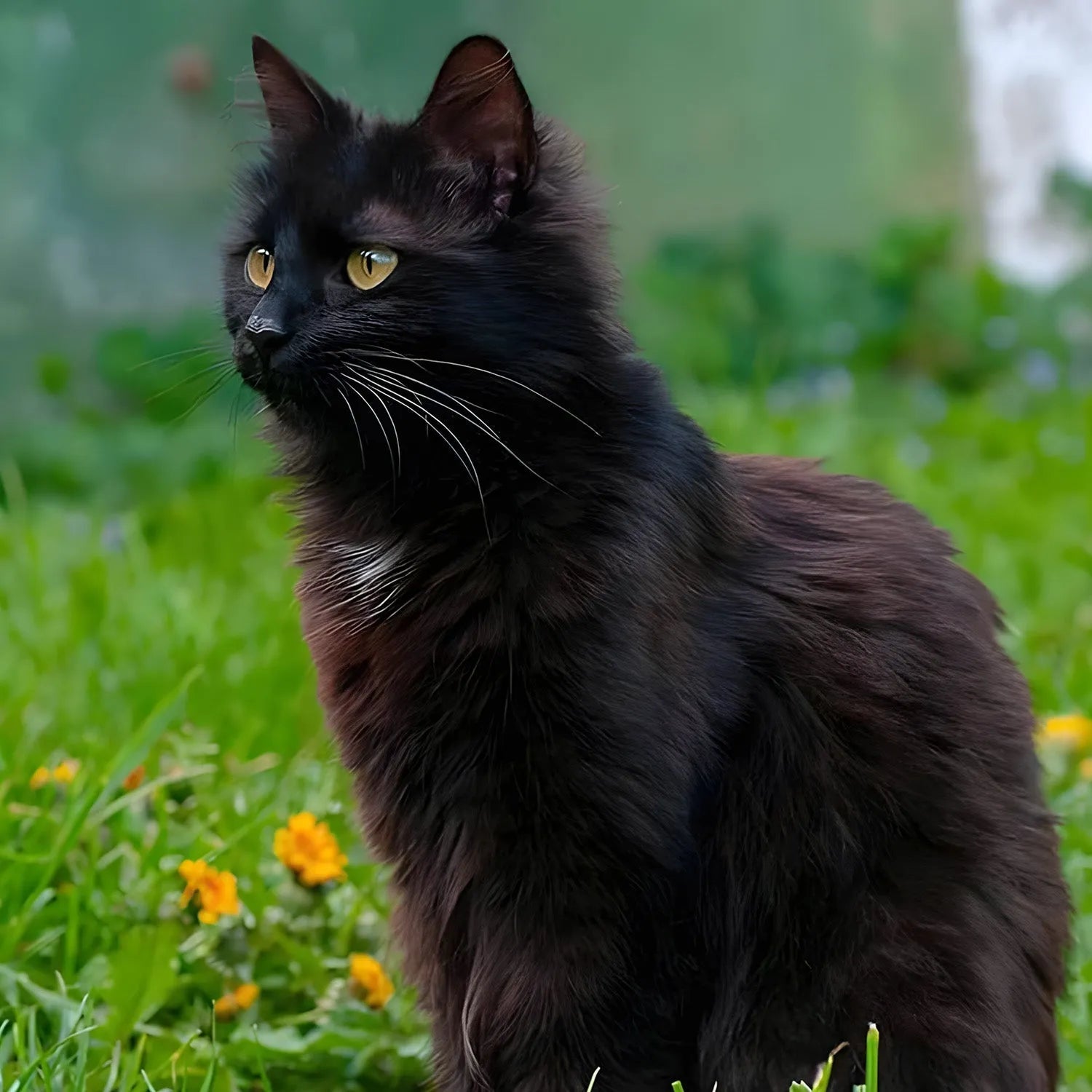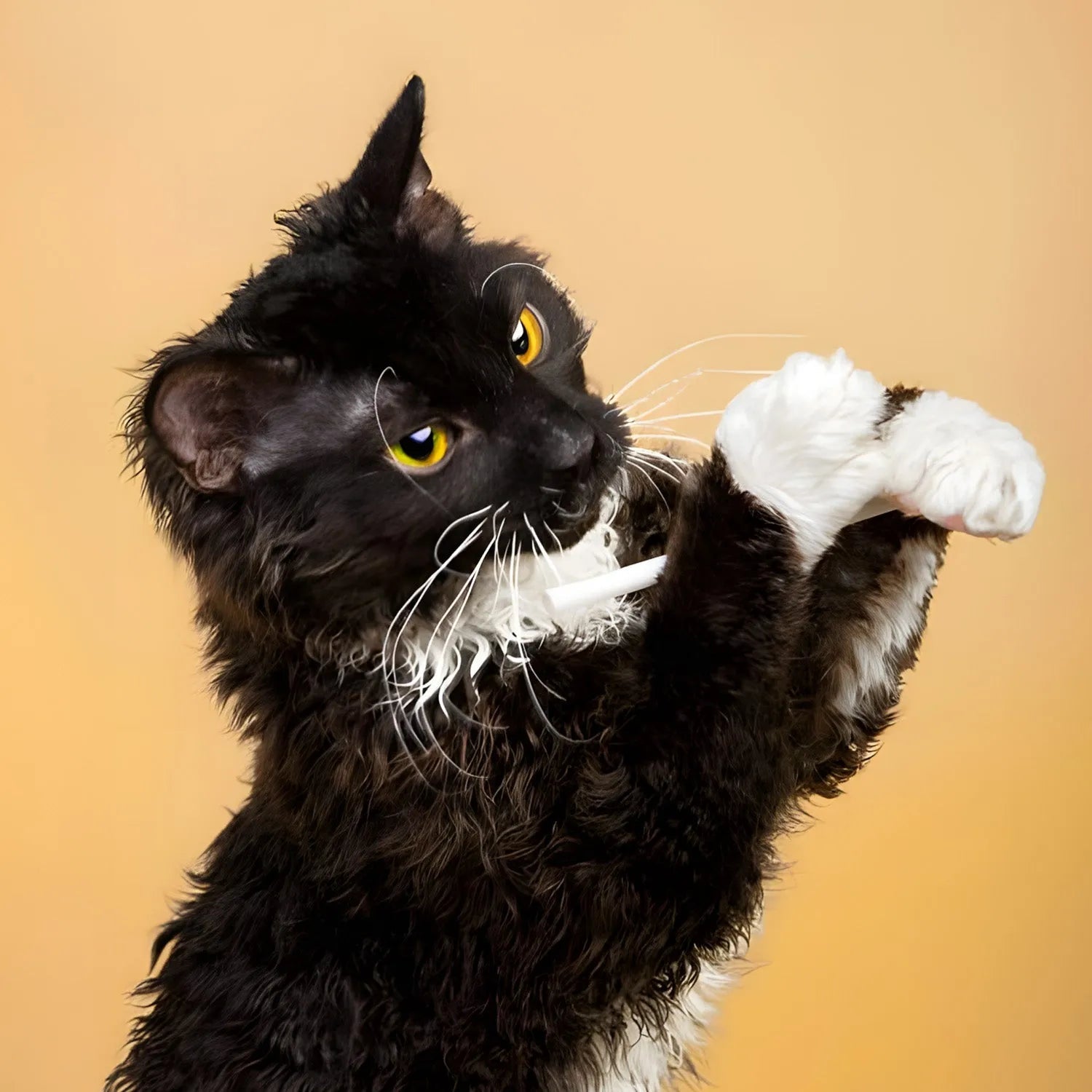Ocicat: The Wild-Looking Cat with a Gentle Heart
Introduction
The Ocicat is a breed that captures the hearts of cat enthusiasts with its wild appearance, reminiscent of a wild feline, and its affectionate, playful personality. Despite its exotic, jungle-cat look, the Ocicat is 100% domesticated, with no wild ancestry. Developed through careful breeding to resemble an ocelot, the Ocicat combines the beauty of a wildcat with the temperament of a loving family companion. This athletic and intelligent breed is known for its playful, social nature and thrives in homes where it can interact with humans and other pets. In this blog, we’ll explore the Ocicat’s lifestyle, behavior, grooming needs, and how it interacts with humans and other pets.
Ratings (1-5)
-
Environmental Adaptability: 5
-
Food Consumption: 4
-
Need for Companionship: 5
-
Trainability: 5
-
Tolerance of Children: 5
-
Ease of Domestication: 5
History and Origins
Despite its wild appearance, the Ocicat was developed entirely through domestic breeding, with no wild cat genes. The breed originated in the United States in the 1960s when breeders were attempting to create an Abyssinian-pointed Siamese. Instead, one litter produced a kitten with golden spots, which resembled a small wildcat. This kitten, named Tonga, marked the accidental beginning of the Ocicat breed. Over time, Ocicats were bred using Abyssinians, Siamese, and American Shorthairs to develop the breed's distinctive look while maintaining its friendly, domestic personality. The Ocicat was officially recognized as a breed in the 1980s, and it has since gained popularity for its exotic appearance and social nature.
Physical Characteristics and Colors
The Ocicat is a medium-to-large-sized cat with a muscular, athletic build. Its most striking feature is its spotted coat, which gives it the appearance of a wild ocelot. The spots are well-defined and cover the body in a pattern that can range from large thumbprint-like spots to smaller speckles, creating a striking contrast against the base coat. Ocicats come in a variety of colors, including tawny, chocolate, cinnamon, blue, lavender, and fawn. Their almond-shaped eyes can be any color except blue, and their large ears and strong, powerful legs complete their exotic look. Despite their wild appearance, Ocicats are completely domesticated and have a gentle, loving temperament.
Lifestyle and Behavior
Ocicats are known for their social and outgoing personalities. They are playful, energetic cats that love to interact with their human companions and other pets. Ocicats are often described as "dog-like" because of their loyalty and tendency to follow their owners around the house. They enjoy playing games like fetch and are known to be highly interactive, always seeking attention and stimulation. Ocicats are curious and enjoy exploring their environment, so they appreciate having plenty of toys, climbing structures, and space to roam. They are also very vocal and will often "talk" to their owners, using a variety of meows, chirps, and trills to communicate.
Trainability and Intelligence
Ocicats are highly intelligent cats that can be easily trained to follow commands, perform tricks, and even walk on a leash. They respond well to positive reinforcement techniques, such as treats and praise, and enjoy interactive toys that challenge their minds. Because of their high energy and intelligence, Ocicats benefit from regular play sessions that engage both their physical and mental abilities. Training sessions with Ocicats should be fun and varied, as they quickly become bored with repetitive tasks. Their intelligence, combined with their playful nature, makes them easy to train and a joy to interact with.
Social Behavior and Human Interaction
Ocicats are incredibly social cats that form deep bonds with their human families. They thrive on human interaction and are happiest when they can be involved in daily activities, often following their owners from room to room. Ocicats are affectionate and love to be the center of attention, frequently seeking out cuddles and playtime. They are known for their loyalty and will often develop a strong attachment to their owners, similar to the behavior of dogs. Despite their affectionate nature, Ocicats are not overly clingy and are independent enough to entertain themselves when left alone. Their friendly and outgoing personalities make them ideal companions for families and individuals who want an interactive, social pet.
Compatibility with Children and Other Pets
Ocicats are excellent companions for children due to their playful and tolerant nature. They enjoy interactive play and are generally patient with children’s antics, provided they are treated with respect. Their high energy levels make them ideal playmates for kids, and they often enjoy games like fetch or chasing toys. Additionally, Ocicats tend to get along well with other pets, including dogs, as long as they are properly introduced. Their sociable and adaptable nature allows them to integrate well into multi-pet households, and they often enjoy the company of other animals as much as they do humans.
Grooming and Care
The grooming needs of an Ocicat are relatively low due to their short, sleek coat. Weekly brushing is usually sufficient to remove loose hairs and keep their coat looking healthy and shiny. Because their coat does not mat easily, they require minimal grooming compared to long-haired breeds. Ocicats are naturally clean cats and do not require regular baths unless they get particularly dirty. Regular dental care, ear cleaning, and nail trimming are also important to maintain their overall health. Despite their low-maintenance grooming needs, Ocicats enjoy the bonding time that grooming sessions provide, and it can be a great way to strengthen the bond between cat and owner.
Health and Lifespan
Ocicats are generally healthy cats, but like all breeds, they can be prone to certain genetic conditions. Some of the most common health issues associated with the breed include hypertrophic cardiomyopathy (HCM) and renal or liver issues. Regular veterinary check-ups and a balanced diet are essential to maintain their health. Responsible breeders screen for these conditions to reduce their prevalence in the breed. With proper care, Ocicats can live up to 12-18 years or more. Regular monitoring and preventive care are important to ensure a long and healthy life for your Ocicat.
Environmental Adaptability
Ocicats are adaptable cats that can thrive in various living environments, whether in a small apartment or a larger home. They are particularly well-suited to indoor living, where they can enjoy a stimulating environment with plenty of interactive play. Ocicats are known for their energy and curiosity, so providing them with toys, climbing structures, and interactive puzzles will help keep them entertained. Their adaptable nature makes them well-suited to a wide range of living conditions, but they thrive best in homes where they can receive plenty of attention and interaction from their owners.
Feeding Requirements
A balanced diet is crucial for maintaining the Ocicat's health and energy levels. High-quality cat food that is rich in protein is recommended. Fresh water should always be available. Because Ocicats are active and playful, they may require more calories than less active breeds to support their energy levels. Consult your veterinarian for specific dietary recommendations based on your cat's age, weight, and health needs. Monitoring their diet to prevent obesity is important, as Ocicats can be prone to overeating if not properly managed.
Conclusion
The Ocicat is a beautiful, energetic breed that combines the wild appearance of a jungle cat with the affectionate and loyal nature of a domesticated companion. Their strong bonds with their human companions, combined with their playful and interactive personality, make them wonderful pets for families and individuals alike. If you're looking for a cat that will form a deep, loving connection with you and provide years of companionship, the Ocicat might be the perfect fit for you.
For more information about other cat breeds and pet care tips, stay tuned to our blog!
References:
-
Davis, K. (2021). "The Wild-Looking but Gentle Ocicat." *Journal of Feline Studies*, 35(3), 215-230.
-
Richards, L. (2020). "Caring for Your Ocicat: A Comprehensive Guide." *Cat Lover’s Magazine*, July issue, pp. 25-33.
-
Harris, E. (2019). "Health and Wellness in Ocicat Cats." *Veterinary Journal*, 79(2), 123-137.


